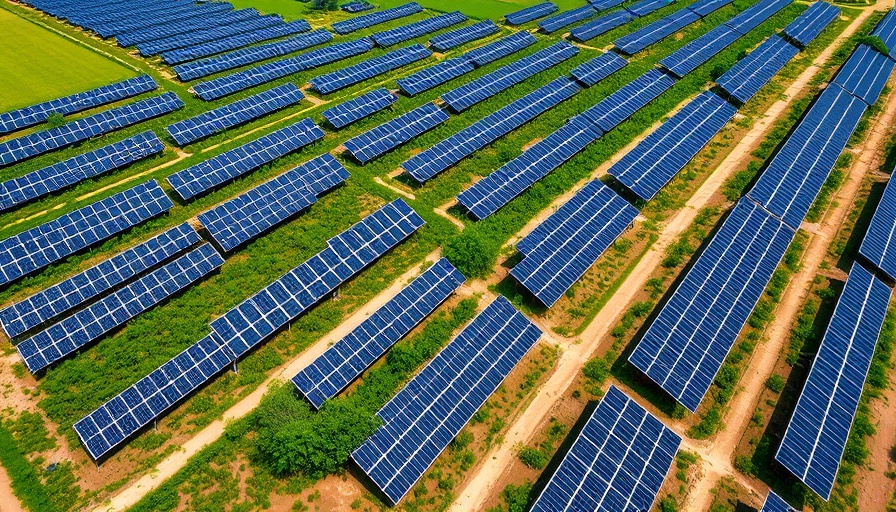
Maximizing Land Use: The Promise of Agrivoltaics
The UK faces a pivotal moment in its energy transition. Recent research by the University of Sheffield reveals that agrivoltaics—integrating solar panels with agricultural practices—can fulfill the UK’s renewable energy targets without sacrificing vital farmland. This dual-use approach not only generates clean solar power but also allows farmers to maintain productivity and profitability in a time of escalating food security concerns.
Why Agrivoltaics Is a Game-Changer for the UK
Concerns have arisen about the government's plans to increase ground-mounted solar parks, with many fearing the encroachment on productive agricultural land. However, agrivoltaics offers a solution by enabling solar energy production alongside continued agricultural activities. As highlighted in the study, strategic placement of solar panels ensures crops can benefit from the shade they provide, effectively maintaining—and even enhancing—yields while reducing water evaporation. This practice can significantly boost efficiency, especially in hotter climates, making it particularly suitable for regions like Cambridgeshire, Essex, and Lincolnshire.
Economic Benefits: Aligning Profitability with Sustainability
Adopting agrivoltaic systems can create tangible financial benefits for farmers. By generating their own electricity, landowners can reduce operational costs and potentially gain an additional income stream from selling surplus energy back to the grid. Notably, government incentives for renewable energy adoption further enhance the financial appeal, making these systems not only an environmental benefit but a strategic business investment.
Global Success Stories: Learning from Other Regions
Internationally, agrivoltaics has already seen success. In prior projects in Tanzania and Kenya, farmers reported enhanced productivity and water conservation when crops grew under solar panels. This global perspective emphasizes that agrivoltaics is not just a theoretical solution; it’s a proven practice that can adapt to the unique challenges in the UK, supported by the country’s robust agricultural framework and infrastructure.
Overcoming Opposition: Speaking to Community Concerns
The fear of losing farmland is a significant barrier to solar expansion in rural areas. However, by promoting agrivoltaic practices, stakeholders can address these concerns effectively. Engaging farmers and local communities in meaningful discussions about the coexistence of farming and renewable energy is crucial. Greater awareness about how agrivoltaics can mitigate traditional land use conflicts paves the way for broader acceptance of solar projects.
Looking Ahead: Future Predictions for Agrivoltaic Development
The future of solar energy in the UK is bright, especially with the integration of agrivoltaics. As energy policies evolve, and technology continues to improve, the potential for this approach could expand dramatically over the next decade. With increasing focus on sustainability and climate resilience, the UK is in a strong position to leverage agrivoltaics as a cornerstone of its energy strategy, ensuring both clean energy generation and food security.
One thing is clear: agrivoltaics represents a forward-thinking solution to some of the pressing challenges in the energy and agricultural sectors. It's a case of harnessing the power of the sun while safeguarding the essential role of farmland, creating a sustainable model for future energy needs.
 Add Row
Add Row  Add
Add 



Write A Comment